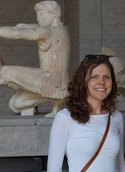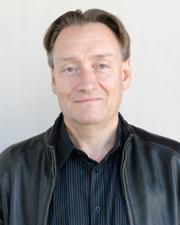
Dr. Elizabeth A. Murphy (PhD, Joukowsky Institute for Archaeology and the Ancient World, Brown University, 2014) is Assistant Professor of Roman Archaeology in the Department of Classics at Florida State University (USA). Her research concerns the social and economic organization of the Roman world; more specifically, it focuses on the history and archaeology of labor, production, and technology, through the lens of ancient urbanism, the Roman military, and socio-economic inequality in antiquity. Her research not only archaeologically reconstructs the experience of artisanal work in the ancient Mediterranean and the contribution of manufacturing to local and regional economies, but also addresses how such work served to reinforce professional identities among crafts people and workgroups that were embedded within Roman society. From the soldier-artisan in a frontier workshop to the urban craftperson in a downtown taberna or in an extramural industrial quarter, her research investigates the diversity of ancient working lives in a wide range of settings.
Dr. Murphy directs the Landscape Archaeology of Southwest Sardinia (LASS), a regional diachronic archaeological survey project on the island of Sardinia (Italy). LASS is a multi-disciplinary, internationally collaborative, and diachronic survey project, with researchers from Florida State University and specialists from other research universities in Europe and North America. LASS generates high-resolution archaeological data with which to address disciplinary questions about long-term land-use, economic integration, and socio-cultural change in the modern region of Sulcis. The study region of Sulcis, which possesses a range of long-exploited natural resources (agriculturally fertile soils and metal ores), is an ideal case with which to assess how episodic integration into but also disintegration from larger economic and political structures drove local sociocultural and economic change in an inland, yet insular environment.
Another of her major projects focuses on military crafts production. Analyzing production material from the kilnworks of X Legio Fretensis at Jerusalem, this project then compares the Jerusalem material to other contemporaneous legionary contexts in order to investigate artisanal traditions among soldiers and the organization of craft production by the military. This is perhaps best exemplified by the manufacture of so-called ‘legionary wares’, a range of pottery types often associated with craft traditions from Italy and the western provinces, that comes to be made in the various frontiers of the empire by the legions themselves. This research is highlighting the role of such material culture in the interplay between shared traditions of military crafts production and adoption of potting techniques and pottery types associated with surrounding peoples within legionary labor organizations.
Building on her research interests in work, labor and urbanism, Dr. Murphy’s UrbNet lectures at Aarhus will analyze and interpret large-scale trends in urban economic topographies. The research on which these lectures will be based has been supported by fellowships at the Research Center for Anatolian Civilizations (Istanbul) and the Albright Institute for Archaeological Research (Jerusalem), and tracks spatial and chronological changes in the scale of investment and location of economic space in ancient cities. The study integrates extant data from published reports and maps of manufacturing workshops and commercial shops, dated between the 1st c. BC and 7th c. AD, in cities across Asia Minor and the Near East in order to quantitatively and geospatially analyze changes in urban economic topographies during this critical period in the history of the classical city and to consider issues of urban reorganization and “decline.” In so doing, it offers unique insight into social negotiations among urban communities and shifting cultural perceptions of commercial and productive activities within the cityscape.
Her many publications include:
During her stay at UrbNet, Dr. Murphy will give a lecture series titled Socially Re-Constructing the Late Roman City: Labor, Networks, Economy, and Narratives of Urban "Decline". The individual lectures are as follows:

Christopher Hallett (PhD, Ancient History and Mediterranean Archaeology, University of California, Berkeley, 1993) is Professor in History of Arts and Classics at the University of California, Berkeley. Professor Hallett is known as a specialist in Roman sculpture, having published a number of studies on Roman portraiture, including a book-length treatment of nude portraiture - The Roman Nude: Heroic Portrait Statuary 200 BC–AD 300 (Oxford 2005).
He is a practicing field archaeologist, and has participated in archaeological fieldwork in Israel, Turkey, and in Egypt. Since 1991 he has worked at New York University’s excavations at Aphrodisias in southwestern Turkey. His research interests thus include the visual culture of Roman Asia Minor. He is co-author (with R.R.R. Smith, Sheila Dillon, Julia Lenaghan, and Julie van Voorhis) of Roman Portrait Sculpture of Aphrodisias (Mainz am Rhein 2006), and he is currently preparing for publication of the sculpture from the city's Bouleuterion (Council House).
As a graduate student Hallett also trained as an Egyptologist, spending five years studying Egyptian hieroglyphics and all phases of the Egyptian language. In 1989 he worked as an epigrapher on the Giza Mastaba Project under the direction of Dr. A.M. Roth. He occasionally teaches graduate seminars on Egyptian art, and has maintained a research interest in Hellenistic and Roman Egypt—particularly the Roman period mummy portraits, the hard stone portraits of Egyptian priests, and the Pharoanic portrait images of the Ptolemies and Roman emperors.
During his stay at UrbNet, Professor Hallett will give a lecture series titled New research on the materials of ancient sculpture during the spring semester of 2021. Altough we aim for the lecture series to be attendable both physically and virtually, this may be subject to change based on current Corona restrictions.
The lecture series consists of the following lectures: